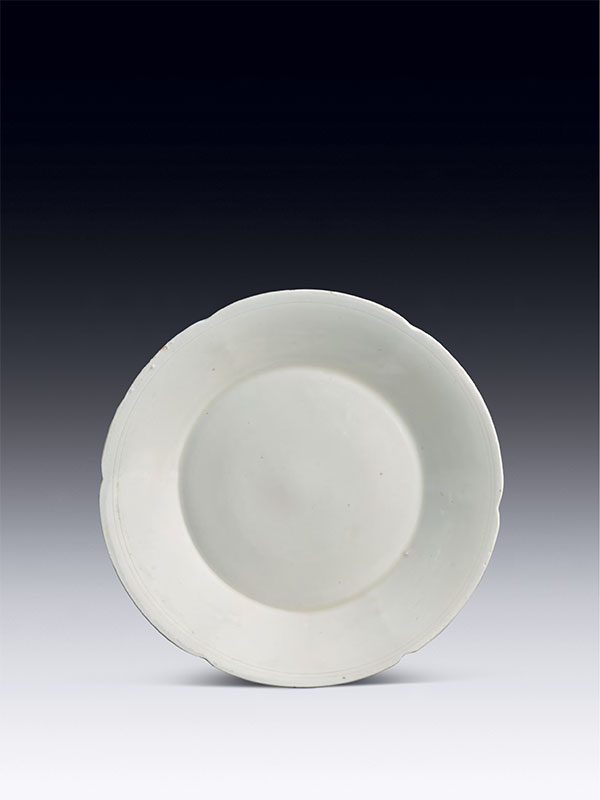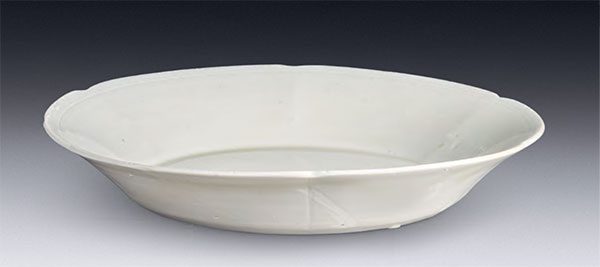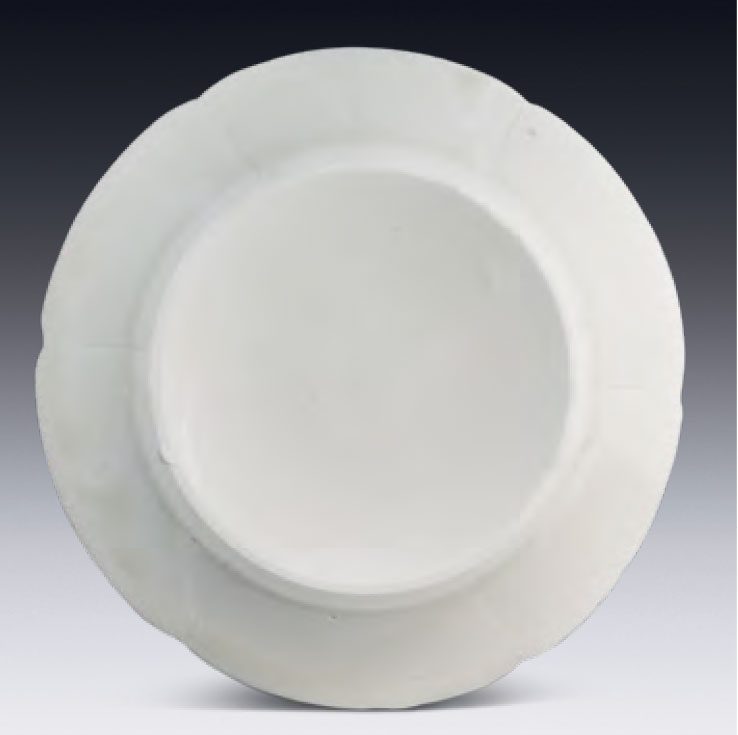DING STONEWARE SAUCER
定窑花口盘
A thinly potted lobed stoneware saucer, the sides flaring outwards from the flat base and terminating in a six-lobed rim. The interior and exterior, including the flat base and the foot ring, are completely covered in an ivory-hued white glaze of ding type.
This saucer was made in the Ding kilns, situated in present-day Quyang county in Hebei province, south-west of Beijing. Ding wares have been grouped by connoisseurs as one of the five famous ceramics from the Song dynasty.[1] The high level of craftsmanship and materials used in creating such wares is evident at first glance and when held. It is unusual for the base also to be completely covered in glaze, as on the present saucer. A similar, slightly larger six-lobed dish with glazed base is in the Meyintang collection.[2] A set of four smaller, but comparable dishes with glazed bases from the collection of Kai-Yin Lo was included in the exhibition Bright as Silver, White as Snow at the Denver Art Museum in 1998.3
- Krahl, R. Chinese Ceramics from the Meiyintang Collection Volume One, Azimuth Editions, London, p. 198
- Krahl, R. op.cit. fig. 347, p. 198
- Lo, Kai-Yin (ed.) Bright as Silver, White as Snow, Chinese White Ceramics from Late Tang to Yuan Dynasty, Denver Art Museum 1998, pl. 17, pp. 118-9



